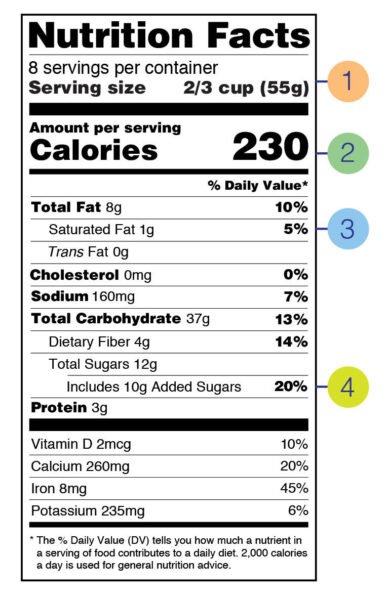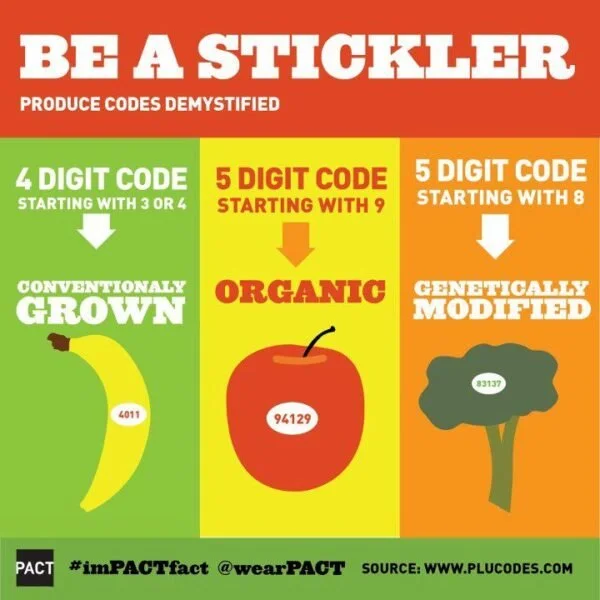Navigating the Nutrition Facts Label
“No added sugar” - some products are naturally high in sugar. So the fact that there’s no added sugar doesn’t mean it’s still healthy.
“Natural” - this doesn’t mean anything. It just means that at one point the manufacturer worked with a natural source like oranges or strawberries.
“Multigrain” - this only means that a product contains more than one type of grain, and most likely refined grains (unhealthy ones). You want to look for WHOLE GRAINS!
“Made with whole grains” - The product may contain very little whole grains. Check the ingredients list — if whole grains aren’t in the first three ingredients, the amount is negligible.
“Light” - this means the product has been processed to have fewer calories or fat which are usually replaced by sugars.
When looking at the NUTRITION FACTS on a package, keep an eye out for the following:
When looking at the NUTRITION FACTS on a package, keep an eye out for the following:
(1) Serving Size: The nutrition facts shown on the label correspond to the SERVING SIZE stated at the top. It can be anywhere from 1 tablespood, 1/4 cup, whole package etc., so really pay attention to that. It can be a very high calorie, fat, sugar, etc. food for a very small portion.
(2) Calories: Weight loss and weight gain is all about calories in and calories out. So if you are trying to lose weight, keep those calories low. It is easy to pack on calories if you eat a lot of packaged and processed food.
(3) Look at the total fat but most importantly at what type of fat is in the food. If it has Trans Fat then I would not buy that product. It raises your LDL “bad” cholesterol and causes inflammation in your body. Other fat is actually good for us, we need it for good brain function. Just make sure it's coming from a healthy source not things like vegetable oils or too much of animal fat.
*** Sodium: we don’t want to consume too much of sodium so just make sure it’s not an absurd amount. Some places with high sodium amounts can be found in canned soups, broths, and deli meats.
(4) Total Carbohydrates: this includes fiber and sugar.
Fiber: the higher the better. Fiber helps prevent constipation and feeds the good bacteria in your gut.
Sugar: lower is better. Pay attention to the amount of sugar that is “added sugar’. Ideally you don’t want any added sugar in your food.
*** Protein: protein packed foods are very filling and help balance blood sugar levels. Aim at higher protein foods if you find yourself getting hungry more frequently.
Don't focus too much on the vitamin and mineral portion of the label. Much of our food is fortified with synthetic vitamins and minerals our bodies often can’t use properly. These synthetic nutrients can cause more harm than good. So again, this leads to my point of staying away from too much processed food. You want most of your food coming from the farm not a factory or a chemistry lab.
A few tips:
Always go for organic food as much as possible. No matter if it’s a packaged food or produce. It will always contain more vitamins and minerals compared to conventional food as well as less pesticides.
When you buy organic, it automatically means it is non-GMO. But be aware that if it only says non-GMO on the package it doesn’t necessarily mean it’s organic.
*** Quick tip to remember: when you buy fruits and vegetables. Look out for those 5 numbers that are on those little stickers. If it starts with a 9, it means it is certified organic.


